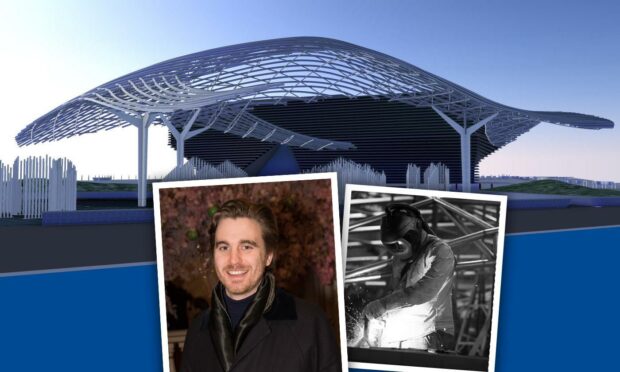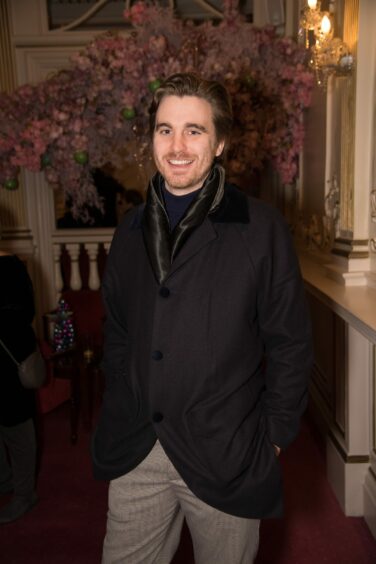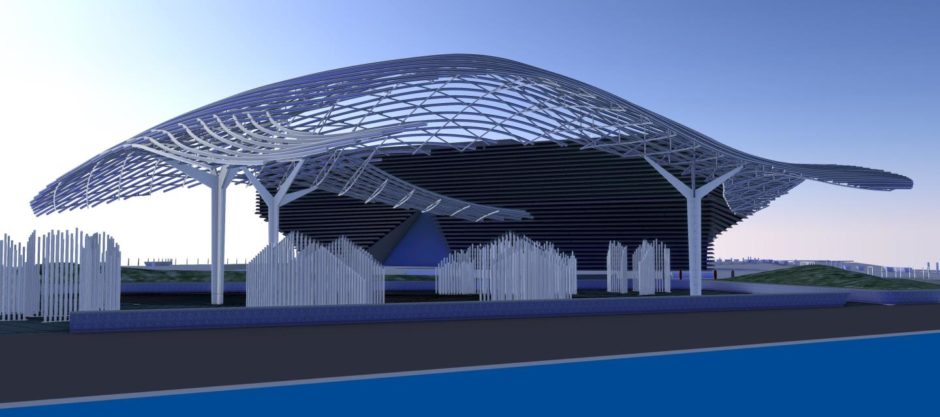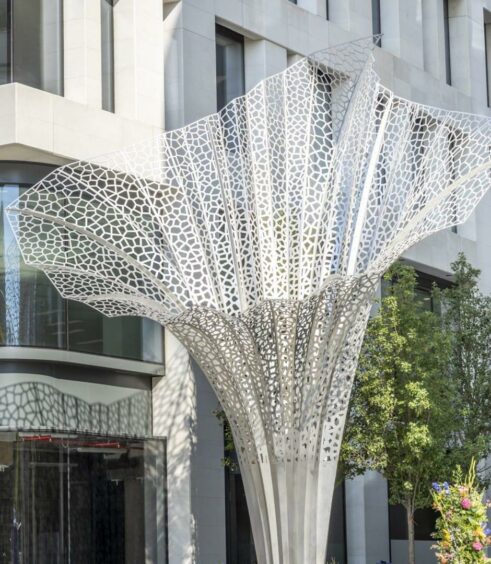Dundee residents have been promised a “sensational” sight when the statue of a humpback whale arrives at the Waterfront.
The statue’s creator Lee Simmons, 33, says the project is the “pinnacle” of his career so far.
The £134,750 sculpture is expected to arrive at the Waterfront by the end of the weekend.
Installation will take at least a day, giving locals ample chance to view the 35-metre by 18-metre model being raised 12 metres above the ground.
“I don’t think anything of this nature has been done in the UK at all,” Lee says.
“Most other notable UK landmarks have been built on site and you see them gradually go up over the course of a month or a year.
“But when this comes it will be pretty sensational. It will enter the Tay and go through Broughty Ferry and the Tay Road Bridge before setting up at the Waterfront.”
Video of the sculpture being built is below
This feature reveals full details of the project, which includes:
- A Humpback whale formed of high-grade duplex stainless steel
- Audio and gaming installations beneath the whale
- Pavement made from Caithness stone
- Interactive and timed lighting
- Permanent plans for the site
Why a whale?
The whale sculpture is part of the city council’s £1 billion Waterfront development – which has so far included the V&A and urban beach.
The mammal was chosen to celebrate Dundee’s historic connections to whaling.
During the 1700 and 1800s, the city was famous for its whaling industry, with hundreds of men and scores of ships being used to hunt the giant marine mammals.
Caught whales were often used for their fat and blubber, which could be boiled down into oil and used in lanterns or candles.
The skeleton of a young adult male humpback whale that swam into the Tay in December 1883 is one of the largest objects in the collection at Dundee’s McManus museum.
What is it made of?
Lee’s design was selected in 2020 by a group of four judges from V&A Dundee, Abertay University, St Andrews University, and Duncan of Jordanstone College of Art and Design.
The whale is made of duplex stainless steel and measures 35 metres head to tail and spans 18 metres between pectoral fins.
“The steel is the type used by the oil and gas industry in very harsh environments at sea,” Lee says. “It is extremely robust and should outlast me!
“It will also be easy to maintain.”
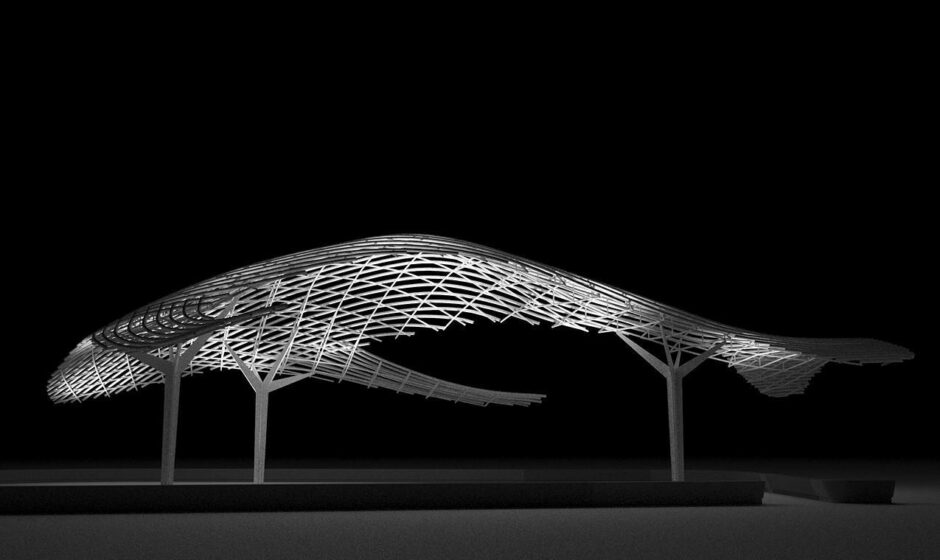
The steel was sourced from Finland and the other materials from across the UK.
Twenty workers have been assembling the whale in Littlehampton, West Sussex, and hundreds of people were involved throughout the supply chain.
When will it arrive?
The model will come on a barge along with a 600-tonne crane that will be used to install it, onto columns, 12 metres above the ground.
Dundee City Council has remained tight-lipped on its actual arrival date but reports state that the barge was due to leave Littlehampton on Thursday night, meaning it should been in Dundee by the end of the weekend.
“I’d like it to be perceived as a subversion of the natural world showing the forward thinking-ness of Dundee and its location next to the V&A,” Lee says.
“As a spectacle it will be phenomenal to see a big vessel coming into Dundee. I don’t think anything of this nature has been done in the UK before.
“The Discovery ship came to Dundee on a barge and I see this as a homecoming for the whale and also a monumentally impressive feat logistically.”
How was it built?
It has taken more than a year – and a very complex operation – to create the sculpture.
“For this project the technicalities have been a tour de force,” Lee says.
He used 3D and computer aided design (CAD) methods to ensure precision and efficiency.
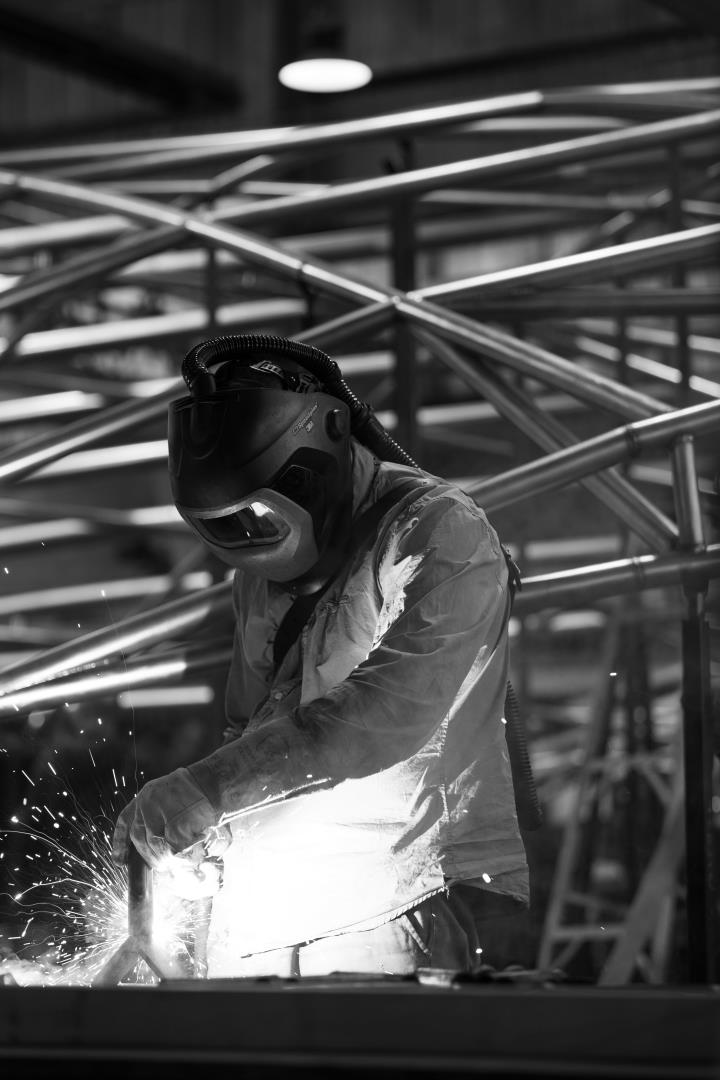
“I always try to be resourceful on materials so you’re using proportionate amounts of material relevant to the project so it has a carbon footprint as low as possible,” he says.
“It took 12 months just to convince both port authorities – Dundee and Littlehampton – that I could get it through various bridges. I have become a marine expert!
“It’s been planned minute by minute, bringing together a series of specialists on top of their game.
“If the sculpture had been put together on site in Dundee it would have taken many many months and the project would have been elongated.
“It had to be done in a proficient manner.”
What will be in the installations?
A 650-square-metre digital park with a series of installations will go beneath the whale.
One of these is a four-sided interactive gaming area, which Lee created with Abertay University and Dundee company Konglomerate Games.
There will also be two audio installations, including whale songs sourced by St Andrews University.
These will be layered with sounds of water and bubbles.
Lee also talks of there being an “abstract take on forests” with an “almost maze-like structure”.
The area will be illuminated by interactive eco-friendly fibre-optic lighting.
It will be turned off at certain times of the day, much like street lighting.
What about the surfacing?
Lee says the pavement beneath the whale will be bespoke, having sourced 650 square metres of stone from a quarry in Caithness.
The colour pallet will be “loose and nautical” with shades of blue and green.
“The stone is cut in a fashion in which the whale is moving so there will be fluid dynamic lines.”
Will the sculpture be permanent?
The statue has been designed to be a long-term feature of the Waterfront.
It is also anticipated that the installations will remain in place, perhaps rotating in the future.
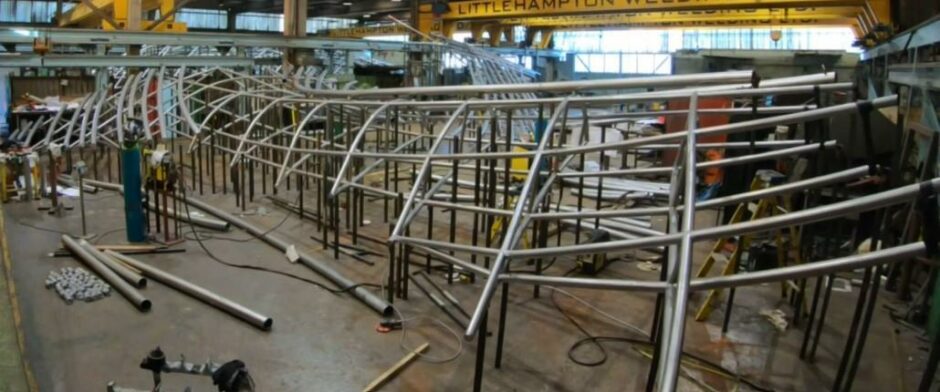
“I am conscious that there’s life after I have finished and with Abertay there is an opportunity to pick it up and evolve it over the coming years,” Lee says.
“I have been working with them so it has a future life.
“The Waterfront is a 5G test bed so there could be 5G interactive elements in the park.”
‘This is the pinnacle’
After graduating from the Royal College of Art in 2011, Hertfordshire resident Lee has worked on a number of high-profile projects.
Primary among these is Circadian, on the corner of London’s Hyde Park.
This 11m-high steel sculpture connects two new buildings to their natural surroundings, resembling a flora-like form growing towards the natural light.
The eight-year project culminated in its unveiling in September 2021.
Lee, who trained as a jeweller and silversmith at Sheffield Hallam University, also created the Wall of Fame at The London Palladium.
Unveiled in 2018, it serves as a permanent legacy to the many stars that have headlined the venue.
His biggest test has been the the Dundee project, though.
“This is the pinnacle of what I have done so far,” Lee says. “If this is the last project I do I would be pleased.
“There has been so much blood, sweat and tears.
“This is a project for the people and I want to make it as much of a success as possible.
“This is very much open for the public to enjoy and hopefully this will be an example of democratising public artwork.”
Team effort
Though the steel is being sourced from Finland, all other materials and labour are a product of the UK.
- Contractor – Morgan Sindall
- Transport – Malin
- Fibre optic lighting – UFO Lighting
- Groundworks and interactive installation – Metaltech UK
- Metal fabrication and installation – Littlehampton Welding
- Pavement stone – Quarry in Caithness
